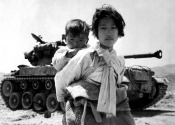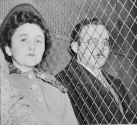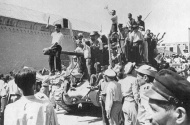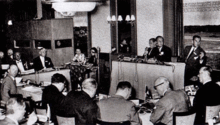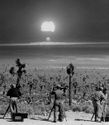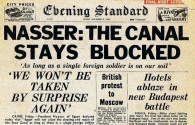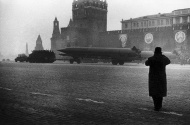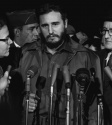Many thanks to our Patrons who cover ~2/3 of our hosting bill. Please join them if you can.
Difference between revisions of "1950s"
Jump to navigation
Jump to search
(stub) |
|||
| Line 1: | Line 1: | ||
| − | {{decade | + | {{decade |
| − | |image= | + | |image= |
| − | |description= | + | |description=The [[1950s]] saw an increased bipolarization.... |
| + | |constitutes= | ||
}} | }} | ||
| − | == | + | ==Cold War== |
| − | + | ===McCarthyism=== | |
| + | ===Nuclear Arms Race=== | ||
| + | ==CIA== | ||
| + | ===1954 Guatemalan coup d'état=== | ||
{{SMWDocs}} | {{SMWDocs}} | ||
==References== | ==References== | ||
{{reflist}} | {{reflist}} | ||
{{Stub}} | {{Stub}} | ||
Revision as of 07:58, 16 September 2016
| 1940s« | |
|---|---|
| The 1950s saw an increased bipolarization.... |
Property "Has image" (as page type) with input value "File:" contains invalid characters or is incomplete and therefore can cause unexpected results during a query or annotation process.
Contents
Cold War
McCarthyism
Nuclear Arms Race
CIA
1954 Guatemalan coup d'état
Related Quotation
| Page | Quote | Author | Date |
|---|---|---|---|
| US/Deep state | “During the 1940s and 1950s, corrupt politicians championed the politics of anti-communism in order to divert attention from the growing nexus between organized crime, big business and government. At the center of this nexus stood FBI Director J. Edgar Hoover (1924-1972), who cultivated mob connected businessmen in his war against communism, while refusing to cooperate with the Kefauver Committee's landmark investigation of organized crime in 1950-1951.” | Jeremy Kuzmarov | 10 June 2021 |
Many thanks to our Patrons who cover ~2/3 of our hosting bill. Please join them if you can.
